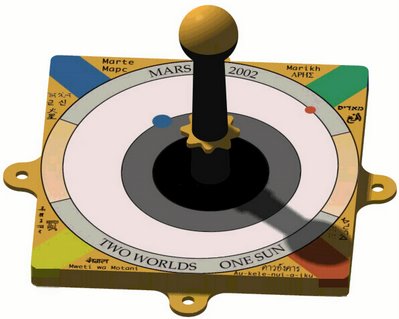THESE SITES HAVE CROSSWORD PUZZLES & GAMES THAT KIDS MIGHT ENJOY.
I found some interesting information on sundials that helps me have a better appreciation for this instrument - here are some nice pictures & some details on how a sundail works.

This is a Sundial for Mars - very cool!!!

As the earth turns on its axis, the sun appears to move across the sky. The shadows the sun casts move in a clockwise direction for objects in the northern hemisphere. If the sun rose and set at the same time and spot on the horizon each day shadow sticks would have been accurate clocks. However, the earth is always spinning like a top. It spins around an imaginary line called its axis. The axis runs through the center of the earth from the North Pole to the South Pole. The earth's axis is always tilted at the same angle.
Every 24 hours the earth makes one complete turn, or rotation. The earth rotates on its axis from west to east. The earth's rotation causes day and night. As the earth rotates, the night side will move into the sunlight, and the day side will move into the dark.
On the earth's yearly trip around the sun the North Pole is tilted toward the sun for six months and away from the sun for six months. This means the shadows cast by the sun change from day to day.
Because the earth is round, or curved, the ground at the base of a shadow stick will not be at the same angle to the sun's rays as at the equator. Because of this the shadow of the shadow stick will not move at a uniform rate during the day.
Eventually man discovered that angling the gnomon and aiming it north made a more accurate sundial. Because its angle makes up for the tilt of the Earth, the hour marks remained the same all year long. This type of gnomon is called a style. After this discovery, people were able to construct sundials that were much better at keeping accurate time.
No comments:
Post a Comment